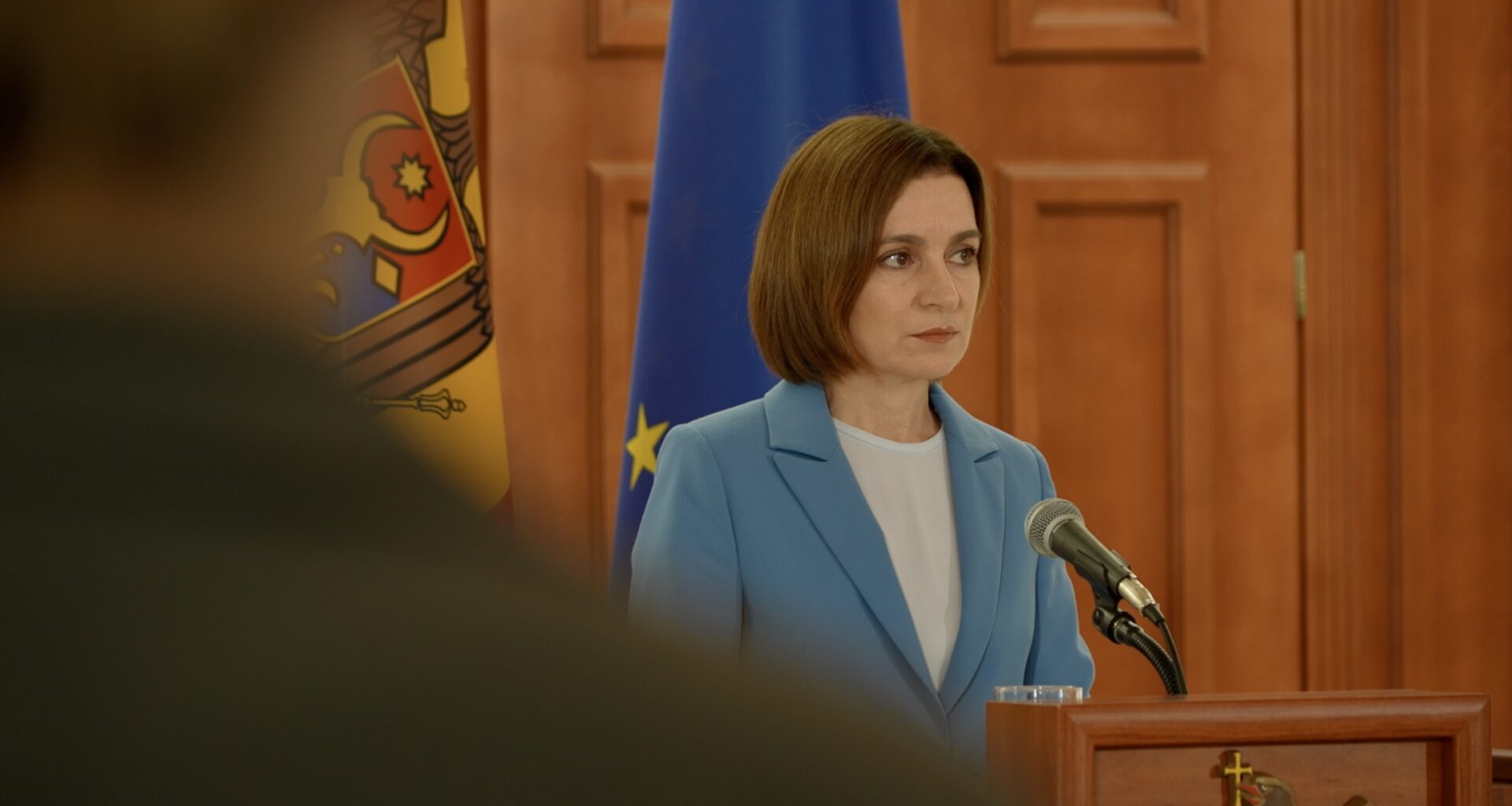On Sunday, September 28th 2025, Moldovans strengthened the pro-European camp of President Maia Sandu despite a massive campaign of Russian interference. The country had to mobilize significant resources to counter these manipulations.
October 10, 2025 –
Théodore Donguy
–
Articles and Commentary
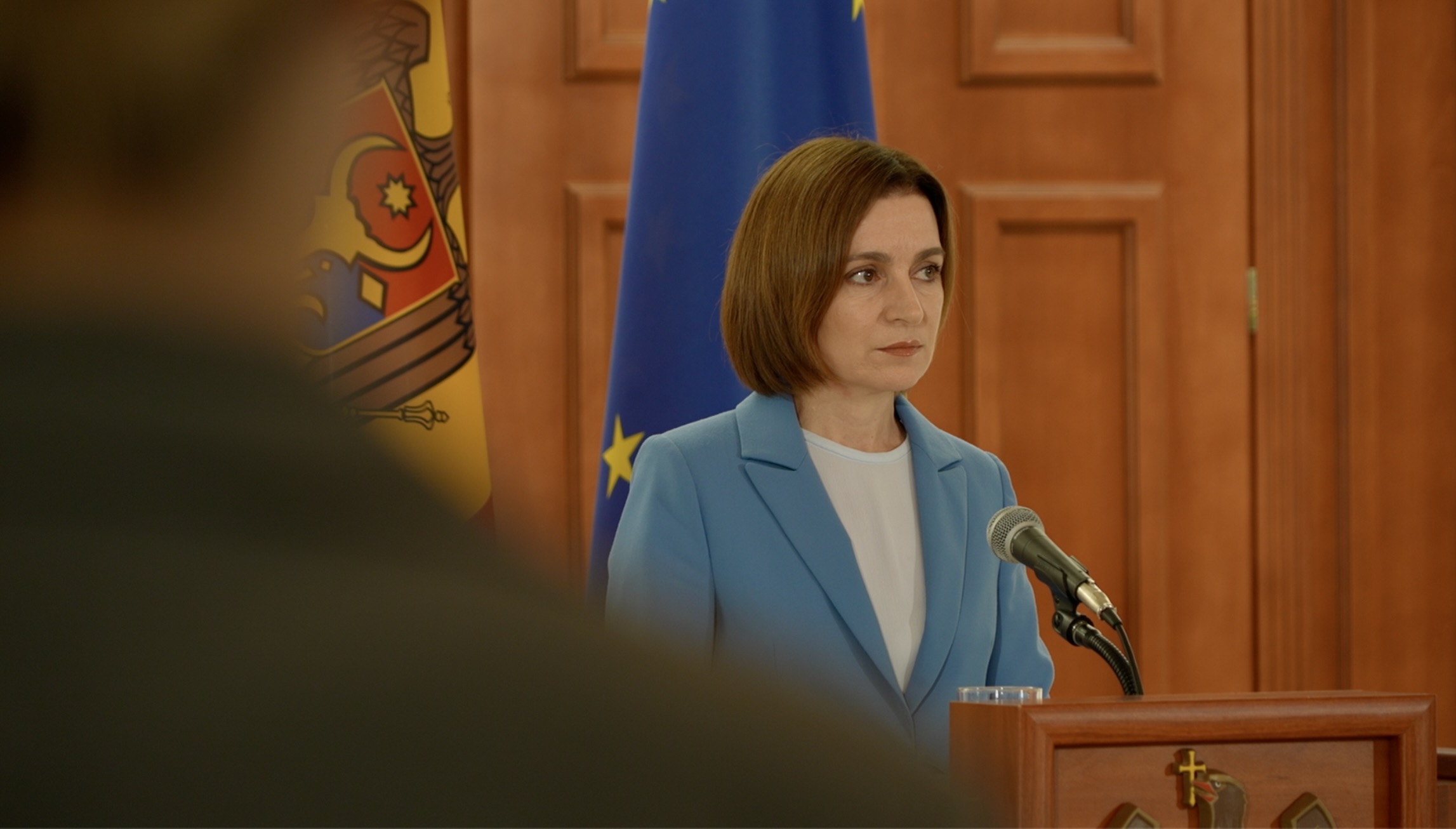
Maia Sandu has been the President of Moldova since 2020. Photo: Théodore Donguy
From behind her podium, President Maia Sandu looked visibly relieved. Addressing the nation from the presidential palace in Chișinău for the first time since the official results were announced, she declared: “Yesterday’s vote represents a strong mandate for the Republic of Moldova’s EU accession process.” Her party, the PAS, secured 55 of the 101 parliamentary seats.
Her tone quickly became solemn as she reflected on the electoral process: “The Kremlin tried to divide us and undermine your trust in the state and its institutions,” she warned.
Russia’s “operation Matryoshka”
During these parliamentary elections, Moldova – a country of 2.4 million people, wedged between Ukraine and Romania – faced unprecedented exposure to “Operation Matryoshka,” Moscow’s continent-wide hybrid influence campaign. Since 2022, this operation has sought to sway public opinion and destabilize democracies across Europe, with a particular focus on undermining Moldova’s pro-European forces, including President Maia Sandu’s party.
Moldova’s youth feel the impact daily. Mirula R., a 19-year-old university student, opens TikTok only to find her feed flooded with videos denouncing “the poison of the European Union” and the dangers of joining the EU. One video, she says with a laugh, even accuses Sandu of secretly owning luxury properties worth millions.

Mirula can no longer open her social media without coming across pro-Russian videos. Photo: Théodore Donguy
While Mirula brushed off these narratives, many Moldovans still share and believe them. On Chișinău’s trolleybuses, passengers scroll through endless clips accusing Sandu’s party of promoting the “LGBT virus” – a threat they claim would spread if Moldova joined the EU.
According to Antibot4Navalny, an online collective investigating Moscow’s operations in Europe, these influencers are recruited via Telegram and financed in part by funds linked to sanctioned Russian banks. Weeks before the vote, Sandu herself was targeted by a mocking deepfake video, created using Luma AI, which portrayed her rapping in Russian as an ineffective leader.
This network of disinformation is vast: tens of thousands of TikTok accounts generating over 23 million views and 860,000 likes since January, in a country of barely two million inhabitants.
According to Andrei Curararu, a public policy expert, Moldova faced “the largest foreign electoral interference operation ever recorded”, He estimates that Moscow spent around 300 million euros – equivalent to about two per cent of Moldova’s GDP – in an attempt to influence the vote. These funds financed dozens of electoral competitors and flooded social media with hundreds of thousands of manipulative pages and posts.
Moldova’s digital counteroffensive
Throughout the campaign, the Chișinău-based think tank WatchDog.Md worked tirelessly to counter Russia’s hybrid threats. From a modest Soviet-era house, its president, Valeriu Pașa, explained: “The intensity of Russian interference and disinformation is extremely high.”
WatchDog itself came under attack, becoming a target of smear campaigns and cyberattacks. Pașa compared Operation Matryoshka’s output to “five times the amount of content targeting Moldova’s elections than was seen during the last two US elections.”
The Moldovan government also confronted these challenges head-on. Prime Minister Dorin Recean reported that state systems had been targeted by more than 1,000 cyberattacks since the beginning of the year, and that authorities had removed 100,000 fake TikTok accounts spreading disinformation. Officials noted that this information war extended across multiple platforms.
Election day attacks
On election day, the most significant threats did not come from social media but from a coordinated wave of direct cyberattacks and physical disruptions. According to a government source who spoke to New Eastern Europe, targets included the Central Election Commission’s website, government cloud systems, process automation tools, and even some overseas polling stations.
Authorities reported sustained distributed denial-of-service (DDoS) attacks, launched from servers in multiple countries, which generated over 16 million artificial connections in an effort to overwhelm systems tracking live turnout results. These cyberattacks were designed to cripple the digital infrastructure supporting the election, delaying the publication of preliminary results and sowing confusion among voters.
But the disruption extended beyond cyberspace. Several overseas polling stations—including those in Brussels, Bucharest, Rome, Genoa, Alicante, and Asheville (US)—received false bomb threats, forcing evacuations and temporary closures. Though all alerts proved to be hoaxes, the operation disrupted voting, diverted security resources, and sowed uncertainty among Moldovan voters abroad.
Meanwhile, Moldova’s 2,274 polling stations—both domestic and abroad—became hotspots for micro-level interference, including vote buying, voter intimidation, and manipulation of electoral rolls. In some cases, observers reported groups of individuals attempting to influence voters near polling stations, while isolated incidents of ballot stuffing were quickly flagged by monitors and addressed by election officials.
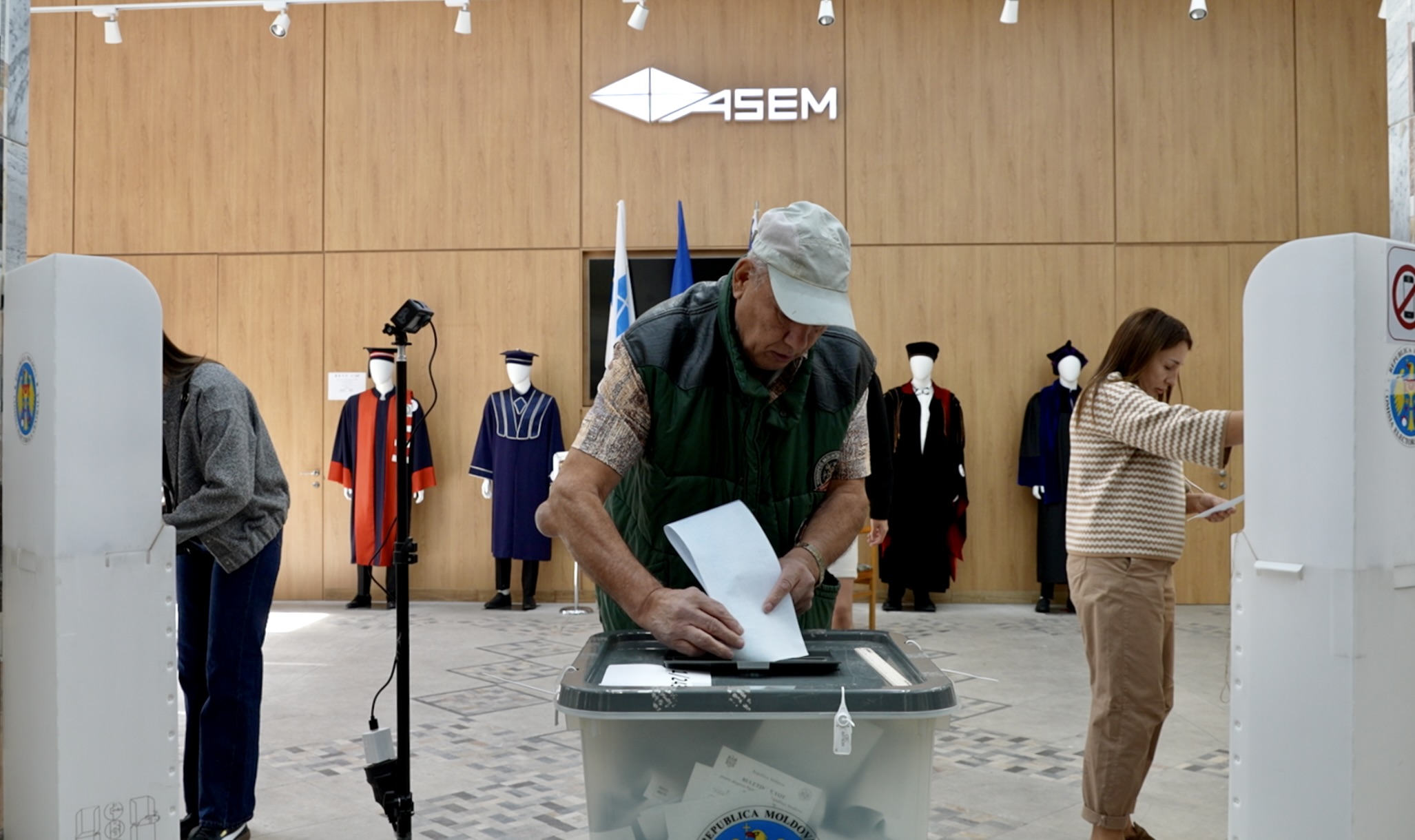
All voters are filmed while casting their ballot into the box. Photo: Théodore Donguy
Watchful eyes: the role of observers
To mitigate these risks, the central election commission worked closely with a robust network of international observers – including a 415-strong delegation from the OSCE – as well as local NGOs such as Promo-LEX and the Civic Coalition for Free and Fair Elections. Their comprehensive monitoring ensured strict compliance with legal procedures, transparency in the ballot, and rapid response to any irregularities reported across Moldova.
A cornerstone of this surveillance effort was the installation of high-resolution cameras above every ballot box, broadcasting live feeds to a centralized monitoring hub. These cameras, operational throughout polling hours, not only deterred potential fraud but also provided real-time verification for observers and election officials.
In addition, the election commission deployed a digital platform allowing citizens to report violations via a mobile app, further enhancing accountability. Among the OSCE’s international observers was Swedish parliamentarian Linnéa Wickman, a seasoned election monitor with prior experience in Georgia.
Stationed at a polling station in Chișinău’s Academy of Economic Studies, Wickman highlighted the importance of impartial oversight: “Our mission is to ensure that every stage of this election is free, fair, and inclusive. Citizens deserve transparency, and their right to vote freely must be protected without exception.” Her remarks echoed the broader OSCE assessment, which later praised Moldova’s efforts to counter external interference while maintaining electoral integrity.
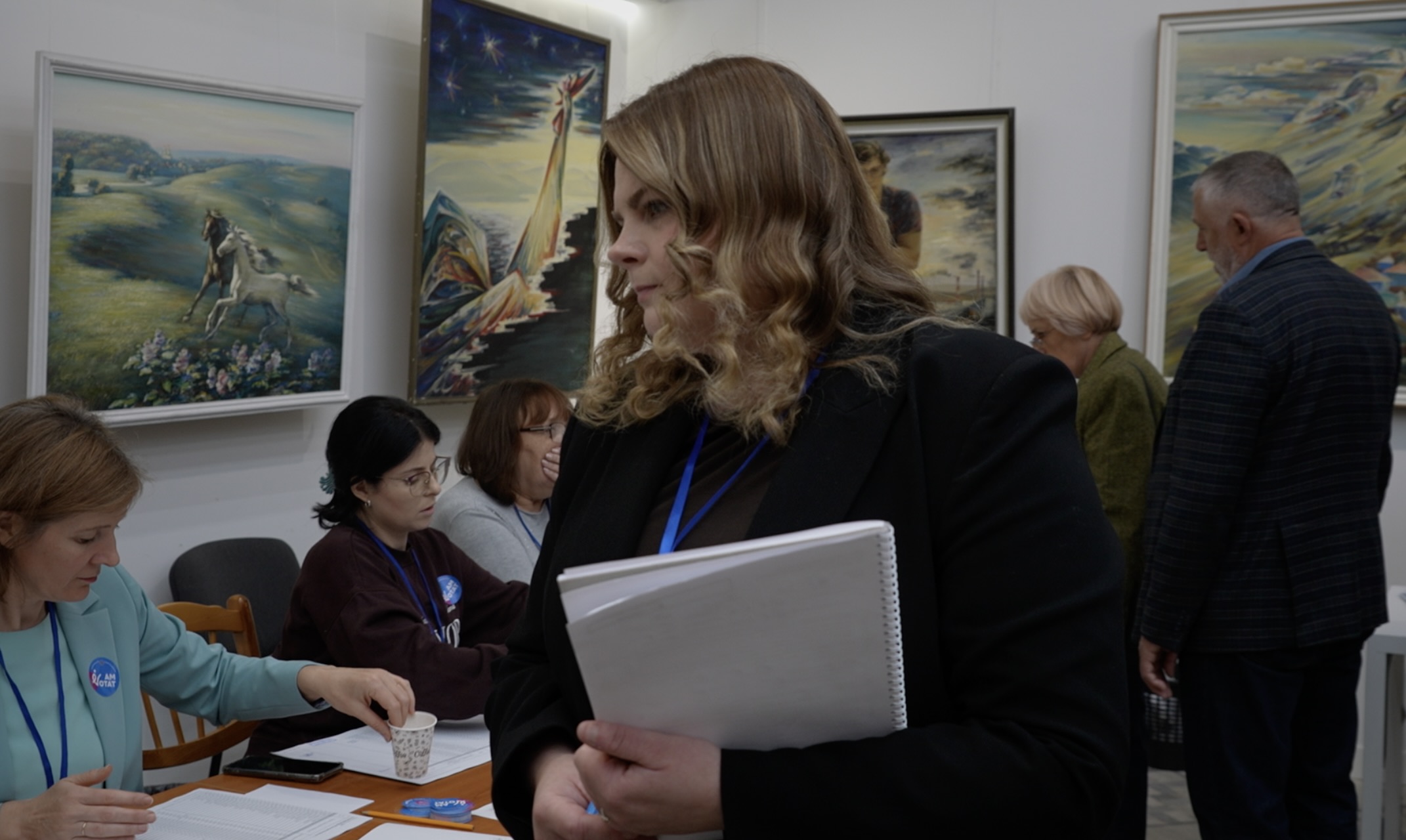
From 8 am to 7 pm, the observers, like Linnéa Wickman, were dispatched in pairs across the country. Photo: Théodore Donguy
Transnistria: a sensitive front
While polling stations in central Chișinău remained orderly, those near the pro-Russian breakaway region of Transnistria posed greater concerns. Around 370,000 residents of this Russian-speaking enclave, where 1,500 to 2,000 Russian soldiers are stationed, hold Moldovan passports but are seen as strongly pro-Moscow.
To minimize the risk of fraud, authorities placed polling stations on the Moldovan-controlled side of the Dniester River. As a result, Transnistrians were forced to travel long distances and cross the river in order to vote.
Opposition leader and former president Igor Dodon denounced what he described as “voter harassment”. His party, the pro-Moscow Patriotic Bloc, is allegedly financed directly by Russia. According to a US intelligence report, Moscow has funnelled at least 300 million US dollars to foreign political actors in some 20 countries since 2014.
The day after the vote, Dodon addressed several hundred supporters gathered outside Moldova’s parliament in Chișinău, where he announced he had filed dozens of formal complaints with the electoral commission, alleging widespread irregularities. The crowd, largely composed of older Moldovans, passionately denounced the election’s organization, echoing Dodon’s rhetoric with chants of “Europe, thieves!” – a slogan he had repeatedly used during the campaign to discredit the pro-European government.
Many in the crowd fervently chanted Vladimir Putin’s name, expressing their unwavering belief that Moldova’s future lies within Moscow’s sphere of influence. Their slogans and speeches reflected a deep-seated nostalgia for closer ties with Russia, as well as scepticism towards the European Union and President Maia Sandu’s reform agenda.
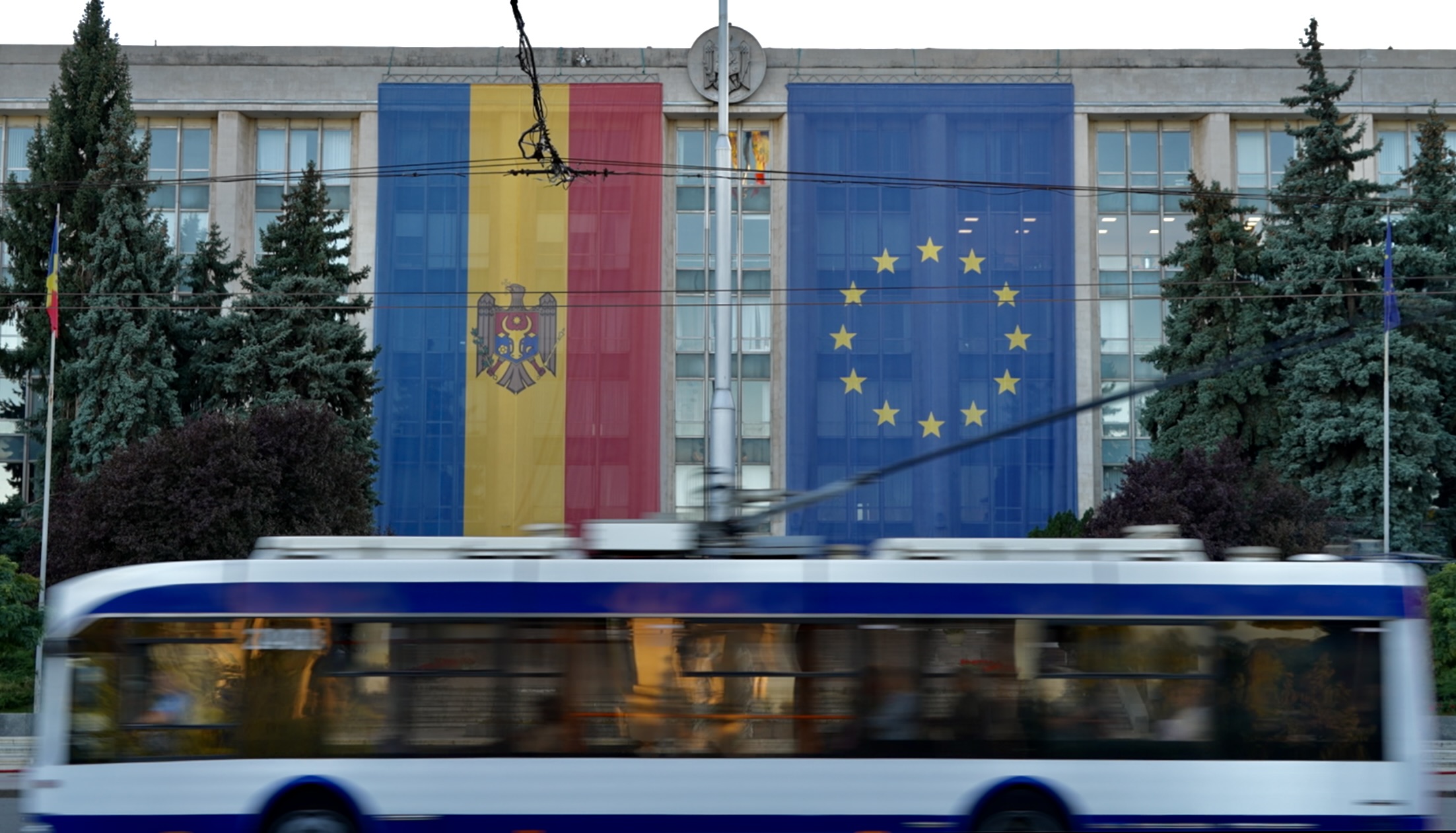
For a year now, a European flag has been displayed on the building of the Moldovan government. Photo: Théodore Donguy
A path forward
Despite the scale of Russian disinformation, cyberattacks, and micro-level interference attempts, the election day proceeded without major incidents altering the outcome. Moldova remains firmly on its path toward European integration, with President Maia Sandu’s government aiming for EU membership by 2028.
This ambitious goal, backed by a pro-European majority, marks a decisive turn toward Brussels—despite Moscow’s relentless efforts to pull the country back into its orbit. The road ahead is steep, but the mandate is clear.
Théodore Donguy is an independent journalist based in Paris. He covers human rights and war in Eastern Europe. He has been published in European outlets including VoxEurop, Paris Match, Hampshire Chronicle and France 24.
New Eastern Europe is a reader supported publication. Please support us and help us reach our goal of $10,000! We are nearly there. Donate by clicking on the button below.
